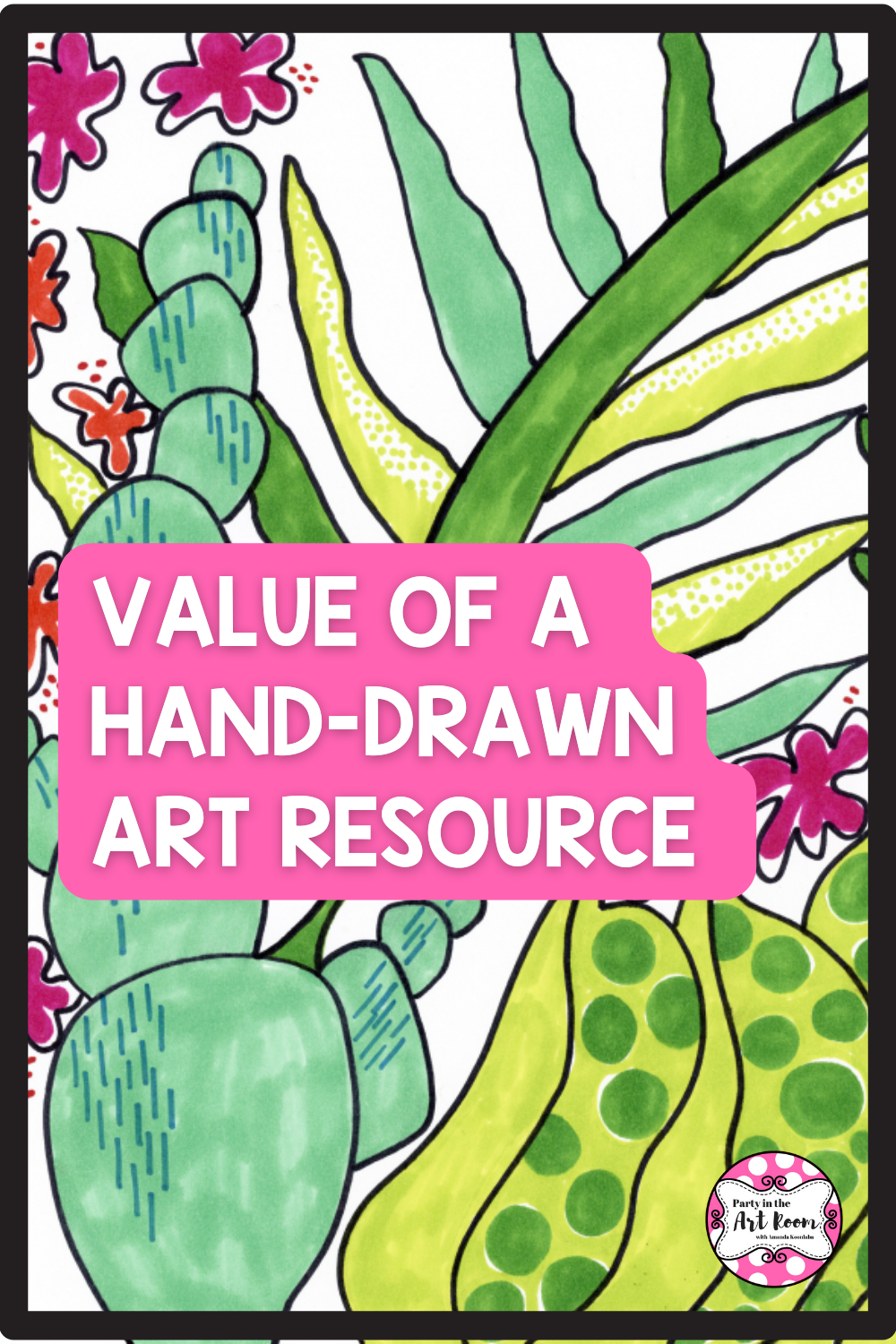3 Ways a Hand Drawn Resource Adds Tremendous Value to Your Instruction
Have you ever considered using hand drawn resources with your students? In most cases, teachers go for resources that have been digitally drawn and created, and rightfully so. There are many deciding factors, but if I could draw your attention (no pun intended) to using hand drawn resources, it is sure to add tremendous value to your instruction. Here’s how!
3 Ways a Hand Drawn Resource Adds Tremendous Value to Your Instruction
1. It takes the pressure off students to be perfect in their artwork.
More times than not, students are always given assignments that seem “perfect.” It’s something they are most likely used to until they are given activities from a more natural perspective. In this case, hand-drawn activities may seem different but overall it will help them see the assignment from a more relevant point of view. They won’t feel the need to “measure” up to the digitally created resource.
2. Hand drawn work helps students be more engaged.
When students can relate to what they are seeing, they are much more likely to be and stay engaged. In the case of using hand-drawn resources, this helps them truly see the possibility of creating something they are happy with. It can also be used as an encouragement tool from an instruction perspective as well. Reassure your students that they do not have to be an artist to produce good artwork. Their best is all that should ever be required.
3. Using hand drawn material can also help students who may have visual perception issues.
I don’t believe this is talked about or addressed near as much as it should. Students are not all the same, which can mean many of them feel left out and forced to adjust according to what we as teacher have made common. For students with visual perception issues, they may see things a lot differently with digitally created and drawn resources.
However, when using hand-drawn materials, the darker lines will show up much differently on a screen. This is another amazing perk!
Where to Find Hand-Drawn Resources
If you’re looking for hand-drawn resources, I have several in my Teachers Pay Teachers Store. Use these to help implement the ideas mentioned above and to give your students a new visual way to complete art projects.
Final Thoughts
Adding value to your instruction should always be a top goal as an educator. Doing so not only makes your job more meaningful but you will also carry a new attitude about how you teach, per se. From a student’s perspective, you’ll also be able to contribute more to their journey of learning.
I’m Amanda, and I align standards and integrate content to help teachers meet the needs of the Whole Child in art class! I have yet to find a standard that I couldn’t teach through art, and I want to share it all with you.
Not sure where to start with bringing art and content together? This freebie guide is packed with 25 ideas to align your art lessons with math and ELA standards. Your students will be crafting art and practicing algebraic thinking. Win-win!
I want all students to feel successful in the art room, so I created a standards-based Daffodil Collage lesson to do just that! The lesson includes an artist study, student reflection, and more, so push your artists to their full potential.
Follow along on my Instagram page for more tips on teaching the Whole Child in the art room!
Connecting art and content together doesn’t have to be mind-boggling. I’ve made it simple with 25 math and ELA art lesson starters - for free! Plus, I included 15 worksheets for students to reflect on their art-making journey.



